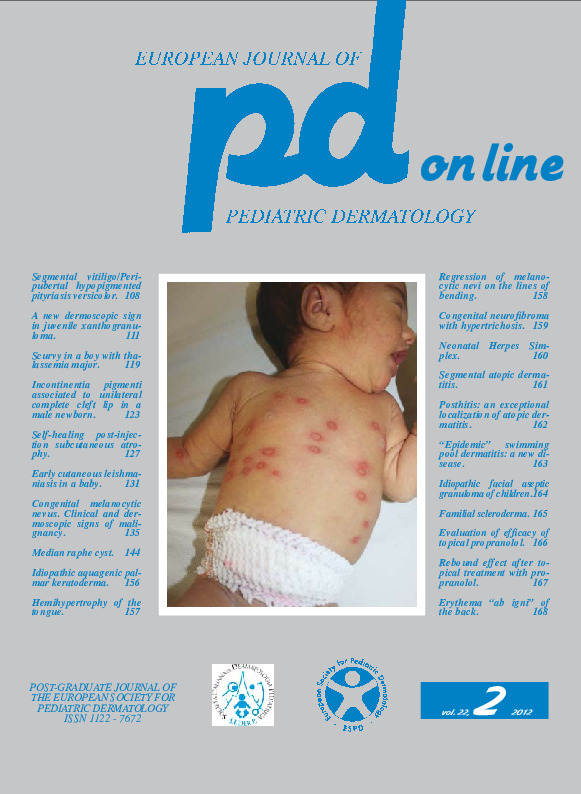Median raphe cyst: classical and canalicular variant, two facets of one disease.
Downloads
How to Cite
Phiske M.M., Avhad G., Aher S., Jerajani H.R. 2012. Median raphe cyst: classical and canalicular variant, two facets of one disease. Eur. J. Pediat. Dermatol. 22 (2):144 -47.
pp. 144 - 147
Abstract
Median raphe cyst is an uncommon, asymptomatic, midline-developmental congenital malformation, presenting since birth or remaining undetectable until adulthood. It presents as a solitary, freely movable, translucent nodule or blue cyst or an indurated cord at any site along the ventral midline between urethral meatus and anus usually near glans. It may undergo trauma or infection giving rise to tender, erythematous and purulent nodules. Presence of a basal layer of cuboidal, myoepithelial cells, true decapitation secretion and positive staining with Human Milk Fat Globulin 1 are characteristic of apocrine cystadenoma which closely resembles it. Rarely it may present as an elongated cord-like structure called raphe canal, this canalicular type being uncommon and rarely reported in literature. Surgical excision is the main stay of treatment, but spontaneous regression has been reported. Two cases of median raphe cyst, classical type and another with canal-like presentation were reported highlighting two facets of one disease.Keywords
Median raphe cyst, Human Milk Fat Globulin 1, Canalicular variant

